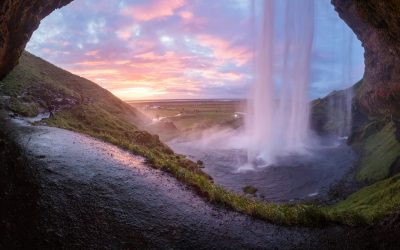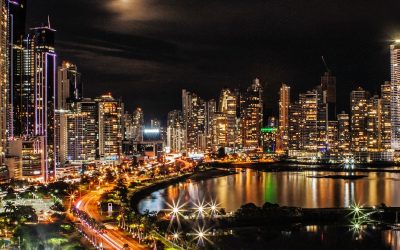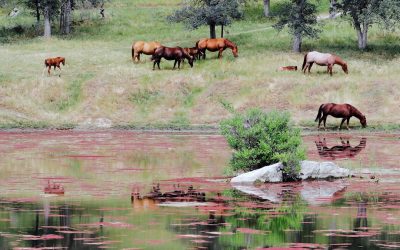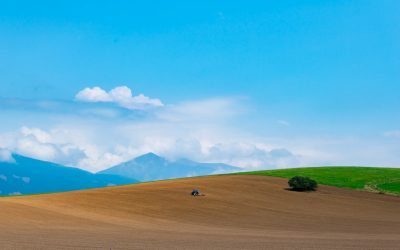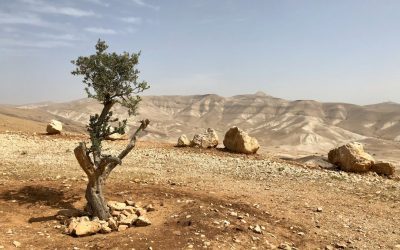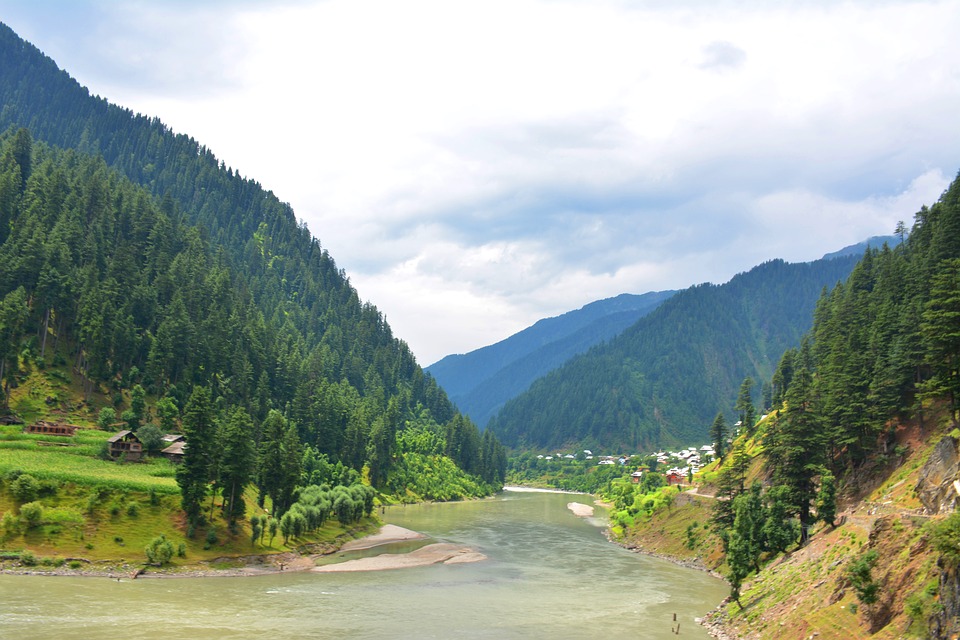Explore the World Through Geography, Natural Resources & Daily History
Clear, reliable and engaging guides that help you understand our planet — from UK geography education to global natural resources and On This Day history events.
Explore, discover, and learn about the wonders of our world! At Earth Site, we’re passionate about bringing geography, history, and science to life for curious minds of all ages. Whether you’re delving into historical events, uncovering the mysteries of the natural world, or seeking interactive resources, you’re in the right place.
Here, you can uncover the stories behind historical events, explore the natural wonders of our planet, and gain valuable insights into how the Earth’s systems shape our daily lives. From the towering peaks of mountain ranges to the far-reaching impacts of human innovation, we aim to make every topic both engaging and informative.
Start your journey of discovery with us today, and let’s make learning an adventure!
What We Cover
Earth Site brings together engaging and accessible educational content designed to help you understand the world, its history, and its natural systems.
🌍 Geography Education (UK & Worldwide)
We publish clear, easy-to-understand geography resources for students, teachers and curious learners. Our guides support geography education in the UK and cover physical geography, climate, ecosystems, population, and global development.
⛏️ Natural Resources & Environmental Geography
Explore detailed country profiles covering natural resources, mining, energy, geology and global environmental challenges. We show how nations manage minerals, water, land and ecosystems, and why these resources matter.
📅 On This Day in History
Every day has a story. Our On This Day history series features major events, anniversaries, traditions, and cultural milestones from around the world — with timelines, context, and fun facts.
TIMELINE
Discovering the Wonders of Iceland: A Journey Through the Land of Fire and Ice
Iceland, known as the “Land of Fire and Ice,” is a Nordic island country located in the North Atlantic Ocean. Despite its name, Iceland is not covered in ice, but rather boasts a diverse landscape of volcanoes, geysers, hot springs, glaciers, and waterfalls. With a population of just over 350,000 people, Iceland is one of the least densely populated countries in the world. Iceland has a rich history dating back to the settlement by Norse explorers in the 9th century. The country was ruled by Norway and later Denmark before gaining independence in 1944. Today, Iceland is known for its progressive society, renewable energy sources, and stunning natural beauty. Iceland has become an increasingly popular travel destination in recent years, attracting visitors from all over the world. The country’s unique geological features, such as geysers and glaciers, make it a haven for nature lovers and adventure seekers. Additionally, Iceland’s capital city Reykjavik offers a vibrant cultural scene with its museums, art galleries, and lively nightlife. Whether you’re looking to explore the great outdoors or immerse yourself in Icelandic culture, there is something for everyone in this captivating country. Summary Iceland is a land of contrasts, with natural wonders like geysers and glaciers alongside modern cities like Reykjavik. Witnessing the Northern Lights in Iceland is a once-in-a-lifetime experience that shouldn’t be missed. The Icelandic horse is a unique breed that’s worth discovering, and the Blue Lagoon is a must-visit geothermal spa. The Golden Circle tour takes visitors to some of Iceland’s most famous attractions, while local cuisine offers a chance to try new delicacies. Adventurous travellers can enjoy hiking, glacier...
Discovering the Hidden Gems of Panama: A British Perspective
Panama may not be the first destination that comes to mind for British travellers, but it is a hidden gem that should not be overlooked. Located in Central America, Panama offers a unique blend of natural beauty, rich history, vibrant culture, and cosmopolitan cities. From pristine beaches to dense rainforests, from ancient ruins to modern marvels like the Panama Canal, this small country has something for everyone. One of the reasons why Panama is a great choice for British travellers is its accessibility. With direct flights from London to Panama City, getting to this tropical paradise has never been easier. Additionally, English is widely spoken in Panama, making it easy for British tourists to navigate and communicate with locals. The country also uses the US dollar as its official currency, eliminating the need for currency exchange. Summary Panama is a hidden gem for British travellers, offering stunning beaches, rich history, diverse wildlife, cosmopolitan cities, delicious food and drink, off-the-beaten-path adventures, and fascinating indigenous cultures. The best hidden beaches in Panama are a must-visit for sun-seeking Brits, with options ranging from secluded coves to lively surf spots. Uncovering Panama’s rich history is a journey through time, from the days of pirates to the engineering marvel of the Panama Canal. The best wildlife spots in Panama offer a unique perspective for British travellers, with opportunities to see exotic birds, monkeys, sloths, and more in their natural habitats. Exploring Panama City is a cosmopolitan experience, with a mix of modern skyscrapers, historic landmarks, and vibrant nightlife. The Best Hidden Beaches in Panama: A Guide for Sun-Seeking Brits Panama is home to some...
Exploring the Fascinating World of Perissodactyla: A Closer Look at Horses, Rhinos, Tapirs and Zebras
Perissodactyla is a group of mammals that includes horses, rhinos, and tapirs. The name Perissodactyla comes from the Greek words “perissos,” meaning odd or uneven, and “daktylos,” meaning finger or toe. This refers to the uneven number of toes on their feet, with horses having one toe and rhinos and tapirs having three toes. Perissodactyla is an important group in the animal kingdom due to their unique characteristics and ecological roles. They are herbivores, which means they play a crucial role in maintaining the balance of plant populations in their habitats. Additionally, they have fascinating adaptations that have allowed them to survive and thrive in various environments. One fascinating fact about Perissodactyla is their size. Some species, such as the African elephant, can reach heights of up to 13 feet and weigh over 7,000 pounds. This makes them some of the largest land animals on Earth. Another interesting fact is their ability to run at high speeds. Horses, for example, can reach speeds of up to 55 miles per hour, making them one of the fastest land animals. Summary Perissodactyla are a fascinating group of animals that includes horses, rhinos, tapirs, and zebras. Understanding the unique anatomy of horses can help us appreciate their beauty and athleticism. Rhinos have evolved over millions of years and are now endangered due to human activity. Tapirs are elusive creatures with interesting habits and characteristics. The science behind zebra stripes is still being studied, but they are thought to serve as camouflage and a way to deter biting insects. Horse Anatomy: Understanding the Unique Features of These Magnificent Creatures Horses have a unique...
Discovering the Hidden Gems of Hungary: A Journey Through the Heart of Europe
Hungary, located in Central Europe, is a hidden gem waiting to be discovered by travelers. With its rich history, vibrant culture, delicious cuisine, and stunning natural landscapes, Hungary offers a diverse range of experiences for visitors. From the bustling capital city of Budapest to the lesser-known regions and countryside retreats, there is something for everyone in this captivating country. Some of the popular tourist attractions in Hungary include the iconic Chain Bridge in Budapest, the historic Buda Castle, the thermal baths of Széchenyi and Gellért, and the picturesque Danube River. These attractions showcase the unique blend of architectural styles and cultural influences that Hungary has to offer. However, there is much more to explore beyond these well-known sites. Summary Hungary has many lesser-known regions that are worth exploring, such as the Tokaj wine region and the Northern Uplands. The country has a rich cultural heritage, with influences from the Ottoman Empire, Habsburg monarchy, and more. Hungarian cuisine is delicious and diverse, with dishes like goulash, chimney cake, and langos. Natural wonders in Hungary include Lake Balaton, the Danube Bend, and the Aggtelek National Park. Getting off the beaten path in Hungary can lead to hidden gems like the village of Hollókő and the abandoned village of Györgyfalva. Exploring the Lesser-Known Regions of Hungary While Budapest may steal the spotlight, there are several lesser-known regions in Hungary that are worth exploring. These regions offer a more authentic and off-the-beaten-path experience for travelers. One such region is the Tokaj wine region, known for its world-renowned sweet wines. Visitors can explore vineyards, taste different varieties of wine, and learn about the winemaking...
The Power of Sulfur: Unleashing the Benefits of this Essential Element
Sulfur is a chemical element with the symbol S and atomic number 16. It is a non-metal and is found in abundance in the Earth’s crust. Sulfur has a pale yellow color and a distinct odor, often described as rotten eggs. It is known for its various properties, including its ability to burn, its insolubility in water, and its low melting point. The use of sulfur dates back thousands of years. Ancient civilizations such as the Egyptians, Greeks, and Romans recognized the importance of sulfur and used it for various purposes. They used it as a fumigant to disinfect their homes, as a preservative for food, and even as a component in medicines. The importance of sulfur has only grown over time, with its applications expanding into various industries such as agriculture, skincare, and industrial production. Summary Sulfur is an important element in our lives, with various applications in health, skincare, agriculture, environment, industry, food, and history. Sulfur can boost immunity, promote overall wellness, and help achieve a clear and glowing complexion in skincare. Sulfur plays a crucial role in enhancing crop yield and soil quality in agriculture, and mitigating pollution and promoting sustainable practices in the environment. Sulfur is widely used in industrial applications, from chemical production to metal refining. Sulfur can enhance flavour and preserve freshness in food, and has a long history of use in ancient civilizations and modern times. The Health Benefits of Sulfur: Boosting Immunity and Promoting Overall Wellness Sulfur is an essential element for our body and plays a crucial role in maintaining overall health and wellness. It is a key component of...
Exploring the Rich History and Culture of Palestine: A Journey Through the Land of Milk and Honey
Palestine, located in the eastern Mediterranean region, is a land of great diversity and rich history. It is situated at the crossroads of Africa, Asia, and Europe, making it a melting pot of cultures and civilizations. The geography of Palestine is varied, with coastal plains, mountain ranges, and the fertile Jordan Valley. The population of Palestine is predominantly Arab, with a mix of Muslims, Christians, and other religious communities. Palestine holds immense importance in the Middle East and global history. It has been a center of trade and cultural exchange for centuries. The region has witnessed the rise and fall of numerous civilizations, including the Canaanites, Philistines, Israelites, Assyrians, Babylonians, Persians, Greeks, Romans, Byzantines, Arabs, Crusaders, Ottomans, and British. Each civilization has left its mark on the land and contributed to its rich tapestry of history. Summary Palestine is a land with a diverse and rich history, spanning from ancient times to modern day. Agriculture has played a significant role in Palestine’s heritage, earning it the nickname “The Land of Milk and Honey.” Palestinian art and culture reflect the people’s identity and struggle, with a strong emphasis on resistance and resilience. Palestine is home to numerous religious sites, making it a popular destination for pilgrims and tourists alike. Palestinian cuisine is a delicious blend of Middle Eastern flavours, with dishes like falafel and hummus gaining worldwide popularity. From Ancient Times to Modern Day: A Timeline of Palestine’s History Palestine’s history dates back thousands of years. It is believed to be one of the oldest inhabited regions in the world. The Canaanites were among the earliest known inhabitants of Palestine....
Exploring the Hidden Gems of Honduras: A Journey Through Central America’s Best-Kept Secret
Honduras, located in Central America, is often overlooked as a travel destination in favor of its more popular neighbors such as Costa Rica and Guatemala. However, this hidden gem is home to a wealth of secret treasures waiting to be discovered. From its rich cultural heritage to its natural wonders and pristine beaches, Honduras offers a diverse range of experiences for every type of traveler. Summary Honduras is a country with rich cultural heritage and natural wonders. The beaches in Honduras are some of the best-kept secrets in the world. The cuisine of Honduras is a fusion of flavours and cultures. The Mayan ruins in Honduras are a fascinating glimpse into the country’s intriguing history. Honduras offers a blend of modernity and tradition, adventure opportunities, and warm and welcoming people. The Rich Cultural Heritage of Honduras: A Fascinating Journey Through Time Honduras boasts a fascinating cultural heritage that is a result of its diverse influences. The country has been shaped by the indigenous peoples who inhabited the region long before the arrival of the Spanish conquistadors. Today, their traditions and customs are still celebrated in various festivals and events throughout the country. One notable cultural site in Honduras is the ancient city of Copan, a UNESCO World Heritage site. This archaeological site was once the capital of the Mayan civilization and is renowned for its intricate stone carvings and hieroglyphics. Visitors can explore the ruins and learn about the history and culture of the Mayan people. The Natural Wonders of Honduras: Exploring the Country’s Biodiversity Honduras is blessed with a diverse range of ecosystems, making it a haven for...
Discover the Hidden Gems of Palau: A Journey through the Pristine Waters of the Pacific
Palau, located in the western Pacific Ocean, is a tropical paradise known for its unspoiled beauty and pristine natural attractions. Comprised of over 340 islands, Palau offers visitors a unique opportunity to explore its diverse landscapes, from lush rainforests to stunning coral reefs. With a rich history and vibrant culture, Palau is a destination that appeals to both nature lovers and adventure seekers. Palau has a fascinating history that dates back thousands of years. The islands were first settled by Micronesian people around 3,000 years ago, and later became part of the Spanish East Indies in the 16th century. In the 20th century, Palau was under Japanese control before becoming a United Nations Trust Territory administered by the United States. Finally, in 1994, Palau gained independence and became a sovereign nation. One of the main attractions of Palau is its natural beauty. The islands are home to an abundance of flora and fauna, including rare and endangered species. Visitors can explore lush rainforests, cascading waterfalls, and crystal-clear lakes. The Rock Islands, a UNESCO World Heritage Site, are a must-see attraction with their unique mushroom-shaped limestone formations. Palau is also famous for its stunning coral reefs, which are teeming with marine life and offer some of the best snorkelling and diving opportunities in the world. Summary Palau is a stunning Pacific island with unspoiled beauty and rich cultural heritage. The best time to visit Palau is during the dry season from November to April, with peak season in December and January. Snorkelling and diving in Palau’s marine life is a must-do activity, with opportunities to see sharks, turtles, and colourful...
Exploring the Fascinating World of Peramelemorphia: A Closer Look at the Curious Bandicoots
Peramelemorphia is an order of marsupials that includes the bandicoots, a group of small to medium-sized mammals found in Australia and New Guinea. These unique creatures have captured the attention of scientists and nature enthusiasts alike due to their fascinating characteristics and behaviors. Studying Peramelemorphia is important for understanding the diversity of marsupials and their role in ecosystems. Bandicoots are known for their distinctive physical features, such as their long snouts, sharp claws, and rabbit-like hind legs. They have adapted to a wide range of habitats, from forests to grasslands, and have unique feeding habits and reproductive strategies. These traits make them an intriguing subject for research and conservation efforts. Summary Peramelemorphia are a fascinating group of marsupials found in Australia and New Guinea. Bandicoots, a type of Peramelemorphia, have a long evolutionary history dating back to the early Miocene period. Bandicoots have unique physical characteristics such as a pointed snout and powerful hind legs for digging. Bandicoots can be found in a variety of habitats across Australia and New Guinea, including forests, grasslands, and deserts. Bandicoots are nocturnal and solitary animals that feed on a variety of insects, small animals, and plant matter. The History of Bandicoots: Origins and Evolution of Peramelemorphia. The evolutionary history of Peramelemorphia dates back millions of years. Fossil records show that bandicoot-like animals have existed since the early Miocene epoch, around 20 million years ago. These early ancestors were small, insectivorous mammals that lived in rainforests. Over time, bandicoots evolved to occupy a variety of ecological niches. Some species became specialized diggers, using their strong forelimbs and sharp claws to excavate burrows and...
Exploring the Rich Culture and History of Haiti: A Journey Through the Pearl of the Caribbean
Haiti, known as the “Pearl of the Caribbean,” is a country located in the western part of the island of Hispaniola in the Caribbean Sea. It shares its borders with the Dominican Republic to the east. Haiti holds great significance in the Caribbean due to its rich history, vibrant culture, and natural beauty. In this blog post, we will explore various aspects of Haiti, including its history, art and culture, music and dance scene, cuisine, natural attractions, spirituality, struggles and resilience of its people, and the preservation and celebration of its culture. Summary Haiti is known as the Pearl of the Caribbean, with a rich history and vibrant culture. The Haitian Revolution was a triumph against slavery and a significant moment in world history. Haitian art and culture are a fusion of African, European, and Indigenous influences. Haiti’s music and dance scene is vibrant and diverse, with a range of styles and traditions. Haitian cuisine is a delicious blend of flavours and spices, reflecting the country’s diverse cultural heritage. The Rich History of Haiti: From Indigenous Peoples to Colonialism Before colonization, Haiti was inhabited by indigenous peoples such as the Taino and Arawak. However, their presence was disrupted when Christopher Columbus arrived in 1492 and claimed the island for Spain. The Spanish colonization had a significant impact on Haiti’s culture and language. In the 17th century, France established its presence in Haiti through colonization. The French brought African slaves to work on plantations, leading to a diverse population with African, European, and indigenous influences. The slave trade played a crucial role in shaping Haiti’s history and economy. The Haitian...
Exploring the Vibrant Culture and Heritage of Pakistan: A Journey Through the Land of the Pure
Pakistan, officially known as the Islamic Republic of Pakistan, is a country located in South Asia. It shares borders with India to the east, Afghanistan and Iran to the west, and China to the north. With a population of over 220 million people, Pakistan is the fifth-most populous country in the world. The country is known for its diverse geography, ranging from the snow-capped peaks of the Himalayas in the north to the fertile plains of Punjab and Sindh in the south. Pakistan is often referred to as the “Land of the Pure,” a nickname that reflects its strong Islamic identity. The name “Pakistan” itself is derived from the Persian words “Pak” meaning pure and “Stan” meaning land. The country was created in 1947 as a homeland for Muslims in British India, following the partition of India. The idea behind Pakistan was to establish a separate state where Muslims could practice their religion freely and live according to their own cultural values. Summary Pakistan is known as the Land of the Pure. The country has a rich cultural diversity, with influences from various regions and religions. Pakistan has a long and ancient history, with evidence of human settlements dating back to prehistoric times. The Mughal era was a golden age of art and architecture in Pakistan, with iconic landmarks such as the Badshahi Mosque and Lahore Fort. Pakistan has a rich literary and poetic tradition, with famous writers such as Allama Iqbal and Faiz Ahmed Faiz. The Rich Cultural Diversity of Pakistan Pakistan is home to a rich tapestry of ethnic and linguistic groups, each with its own distinct...
Discovering the Hidden Gems of Guyana: A Journey through the Land of Many Waters
Guyana, located on the northeastern coast of South America, is a country known for its rich cultural heritage and unspoiled natural beauty. Bordered by Venezuela to the west, Brazil to the south, and Suriname to the east, Guyana is often referred to as “The Land of Many Waters” due to its numerous rivers, waterfalls, and pristine rainforests. With a population of approximately 800,000 people, Guyana is a melting pot of different ethnicities and cultures. The country’s history is deeply intertwined with its colonial past, having been ruled by the Dutch, French, and British at different points in time. This diverse history has shaped Guyana’s unique cultural traditions and celebrations. Summary Guyana is known as the “Land of Many Waters” due to its numerous rivers and waterfalls. The country has a rich cultural heritage, with influences from African, Indian, European, and Indigenous cultures. Guyana’s natural beauty is unspoiled, with vast rainforests, savannas, and wetlands to explore. Wildlife enthusiasts will love Guyana’s diverse range of animals, including jaguars, giant otters, and harpy eagles. Guyanese cuisine is a fusion of cultures and flavours, with influences from African, Indian, Chinese, and Indigenous cooking. The Rich Cultural Heritage of Guyana Guyana’s population is made up of various ethnic groups, including Indo-Guyanese, Afro-Guyanese, Amerindians, Chinese, Portuguese, and Europeans. Each group has brought their own cultural traditions and practices to the country, resulting in a vibrant and diverse cultural landscape. One of the most prominent cultural celebrations in Guyana is Mashramani, which takes place annually on February 23rd. This festival commemorates Guyana’s independence from British rule and features vibrant parades, music, dancing, and elaborate costumes. Another...
